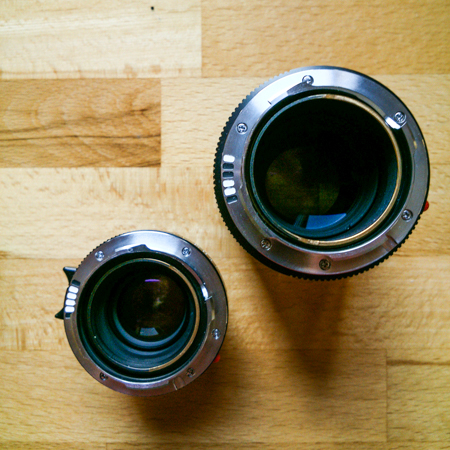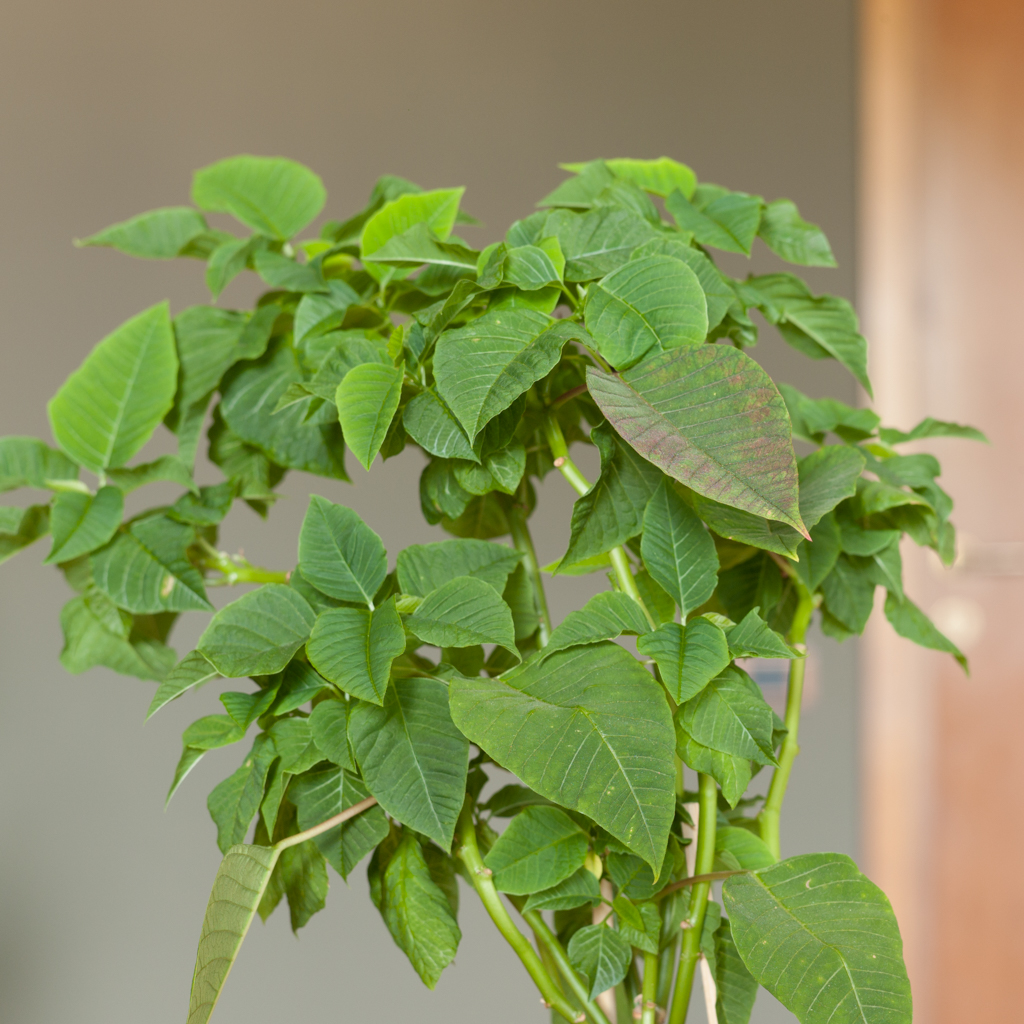Encoded
writer: russell j.t. dyer; posted: sep 2013; revised: mar 2018
Leica rangefinder cameras use M-mount lenses, which are manually controlled lenses. They have no electronic components. Therefore the camera cannot control them, and they cannot communicate information to the camera such as the lens model or the aperture setting. This didn’t matter with Leica’s film cameras since they weren’t electronic devices. It is a useful feature for Leica digital rangefinder cameras if the lenses could provide information to the camera. For instance, on most digital cameras the camera will record the lens settings in each image file it creates. To allow for the gathering of some information, Leica digital rangefinder cameras have an optical sensor that reads a set of six spots which are painted on the flange of the lens where it connects to the camera. There is a different permutation of these six white and black bits of paint for each Leica lens model. These 6-bit codes are on all lenses manufactured as of 2006. If you own an older Leica lens, you can send it to Leica and they will replace the lens flange with a new one which has the 6-bit code.
As I’ve mentioned in previous posts on this site, I own now a Leica M8.2 camera and two Leica m-mount lenses. These lenses were made though before there were 6-bit codes. So they would have to be added. There is a company in Brooklyn, in the United States that will engrave the 6-bit codes on the lens flanges. The cost of engraving my two lens flanges and shipping them back to me in Italy is $160. A month ago, I removed the flanges and sent them to New York. The envelop arrived unfortunately open and empty. The flanges were lost. I was stuck with expensive Leica lenses that could not be attached to a camera, making them temporarily worthless.
To salvage my lenses, I wrote to Leica’s factory in Solms, Germany asking if I could buy new flanges. They said that although the thickness of each flange varies by a minuscule amount, it’s enough to cause the lens focusing to be inaccurate. Therefore, I would have to send them the lenses to attach new flanges and recalibrate the lenses. The minimum cost would be € 500 (about $662), but could be more depending on the condition of the lenses.
Leica Summicron-M f/2.0 50mm Lens & Leica Elmarit-M f/2.8 90mm Lens
Despite the high cost, I mailed my lenses to the factory in Germany. Someone in Leica’s customer service department emailed me with an estimated cost of € 959.85 ($1,271.53) to put new flanges on the lenses and for servicing that was needed. It was a choker, but after trading emails to question the estimate and coming to terms with the idea, I told them to proceed with the work.
The lenses were gone only for a couple of weeks. I received today my lenses back from Leica. I am quite pleased with the work they did. I’m less pleased with the hit on my credit card. Had it been half that cost, I would be much happier. I hope after the credit card is paid and I’ve forgotten the sting of it, I will focus on the pleasure I get from the results of the lenses and not the cost of all of this.
Leica 50mm and 90mm Lens Comparison
Taken with a Leica Summicron-M f/2.0 50mm Lens
Before I sent the lenses to Leica in Germany, there were many specks of something inside the 50mm lens. It didn’t seem to cause a problem, but there was something in there that glittered. The 90mm lens had some dust or mildew in it — not much, but some. They took the lenses apart and cleaned them. Below is a pair of photos showing how clean they look now. I wish I had taken photos of them before I sent them to Leica so I could show the difference.
As part of the package of adding the lens flanges, Leica’s service department recalibrated the lenses. To try that out, I took photos of a poinsettia plant in my home today to see how well I could focus them. The first photo of a poinsettia plant to the right was taken with my Leica Summicron-M 50mm lens. It looks pretty sharp to me. Maybe someone with more experience with this lens and camera could do better — especially someone who doesn’t use eye-glasses. I focused on the one large leaf with a reddish hint to it.
The 6-bit coding allows not only the camera to add the name of the model of the lens attached to it, but by knowing the lens model its able to judge correctly the aperture. Before they serviced the lenses, the camera seemed to guess poorly as to the aperture. Somehow by knowing the specific lens and I guess by measuring the width of the light coming into the camera, it determines the aperture setting. So instead of recording apertures of f/4.8, f/5.7, f/9.5 and other odd increments, its recording now true apertures of f/4, f/5.6, and f/8.
The second photo of a poinsettia plant to the right was taken with my Leica Elmarit-M 90mm lens. Again, I focused on the one large, reddish leaf. It looks very good to me.
I feel good about my lenses now. I bought them at very low prices. Adding another € 480 to the cash I paid for each was not preferred, but the total cost of each lens including the servicing is still much less than I should have paid for each lens — especially now in their current condition. So, I guess it’s fine.



